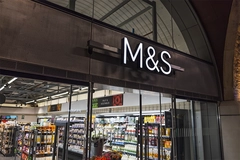
- Industry news
Industry news
- Category news
Category news
- Reports
- Key trends
- Multimedia
- Journal
- Events
- Suppliers
- Home
- Industry news
Industry news
- Category news
Category news
- Reports
- Key trends
- Multimedia
- Events
- Suppliers
Sainsbury’s Food Surplus Statistics Revealed

20 Sep 2016 --- Sainsbury’s has released its food surplus data for 2015/16 which shows improved efficiency throughout the supply chain, but admits it needs to do much more to reduce waste. At a glance, Sainsbury’s has increased the volume of food donated to charitable organizations and now has just under 1,000 partnerships, while the amount of surplus food being converted into animal feed has increased just 0.8 percent.
Food that cannot be donated to charity or converted into animal feed is turned into energy via anaerobic digestion. In 2014/15 there was 29,700 tons and in 2015/16 26,910 tons, a reduction of 9.4 percent.
In the UK, 60 percent of Sainsbury’s stores have a food donation partnership in place and the target is for all British stores to have at least one by 2020. 

“Our values have been at the core of what we do at Sainsbury’s since 1869 and they remain central to us today. Food waste is an issue where Sainsbury’s wants to continue to make an impact. We have been working hard over the past few years to tackle food waste in our business and ensure as much food as possible is redistributed to those who need it – we are proud of the development of more than 1,000 Food Donation Partnerships with local charities,” says Sainsbury’s CEO Mike Coupe.
“As well as looking at our own business, at the start of this year, we also launched our £10 million Waste less, Save more campaign to help households waste less and save more in their homes. Over the last year we have reduced total levels of unsold food, which has been achieved through a number of measures including sourcing more of our produce direct from growers and farmers and using improvements in technology. This is on the back of us being the first grocery retailer to achieve zero operational waste to landfill.”
“Our focus is to continue to look at food waste in our own business, as well as ensure as much food as possible is redistributed to charity via food donation partnerships. We know we can’t do it on our own, so we seek to work in partnership with others in the grocery, food and hospitality industries to have the impact that we all want to see.”
Sainsbury’s wants to be considered the most trusted retailer when it comes to food waste and that’s why it has released its corporate food surplus and food waste data, as part of the “on-going commitment to reduce food waste overall in the UK.”
Although Sainsbury’s is fairly self-congratulatory in its statements about food waste, it also does recognize further improvements are needed.
“We are proud of how far we’ve come, but we also know we’ve still got a long way to go. The data we’re publishing today is part of our journey to reduce food waste significantly within our own operations, as well as to help our customers reduce waste in their households.”
Making such improvements are being driven by several factors including greater collaboration with growers and farmers, working more closely to ensure what they grow matches as precisely as possible the quantities consumers buy.
One example of this is Sainsbury’s collaboration with a salad supplier, with the objective of providing a precise crop schedule which changes according to climate plus other factors, as well as another project where it monitors potato growth in order to predict yields, allowing Sainsbury’s to plan availability of fresh produce - the most commonly wasted food in the UK.
In July Sainsbury’s was the first major grocery retailer to phase out multi-buy deals to help customers reduce waste and help predict and manage stock so there is less surplus in the supply chain.
It has also invested in technology to keep food fresher for longer such as increasing the amount of meat and fish in vacuum-packs and regularly sells “wonky veg” at a cut-price.
“If the crop meets the Rural Payments Agency (RPA) marketing standards which sets the grading guidelines there is a place for it in our supply chain. In addition to using the produce in our basics ranges we work with our suppliers and growers to encourage them to use the crops in other beneficial ways. For example apple juice or ready-made mashed potato and our increasingly popular ‘boodles’ product - butternut squash noodles - are made from squash that would not meet the standards to be sold as whole. This is paramount to our mission to help growers to run sustainable and successful businesses.”
Donating food to people in need
Sainsbury’s says that when food surplus is unavoidable, due to unpredictable weather for instance, donating surplus food to charity is its “absolute priority”. In the last year, the number of stores with partnership programs has increased 145 percent from 215 in 2014/15 to 833 in 2015/16.
Typically, food donated to charities is a range of fresh produce including bananas, carrots and apples plus dry packaged goods such as sugar and pasta as well as bakery items that have been baked in the store. Each store works with one or a number of local food charities and the range of charities supported varies from small food banks, soup kitchens, homeless centers and community cafes to larger charities.
Some of the larger food donation partnerships include Trussell Trust who have over 400 foodbanks and FareShare who redistribute food to charities and community groups who then turn it into meals. Any food that does not contain animal by-products and cannot be donated to charity because it has gone past its use-by-date, is converted to animal feed, this mostly consists of bread. Surplus food waste that is converted to animal feed has seen a marginal increase of 0.8% from 8,854 tons in 2014 /15 to 8,922 tons in 2015 /16.
“The announcement demonstrates the focus Sainsbury’s has been placing on reducing food waste within the business over the last five years and it’s pleasing to see we are making progress,” says head of sustainability, energy and engineering, Paul Crewe.
“Efficiencies within our own supply chain, plus a drive to increase our charity partnerships to ensure food surplus goes to those who need it most, have resulted in overall improvements in our food waste and food surplus reporting.
“However, we know we are only at the start of our food waste reduction journey and we have a long way to go as we work towards the Courtauld commitment of a 20% reduction in food waste by 2025.
“As part of our commitment to reducing the UK’s food waste, not only are we focusing on our own food waste, but we are also supporting our customers with our Waste less, Save more campaign, a £10million (US$13 million) commitment over five years to help customers reduce food waste in their homes as they’ve told us it’s their number one priority.”









